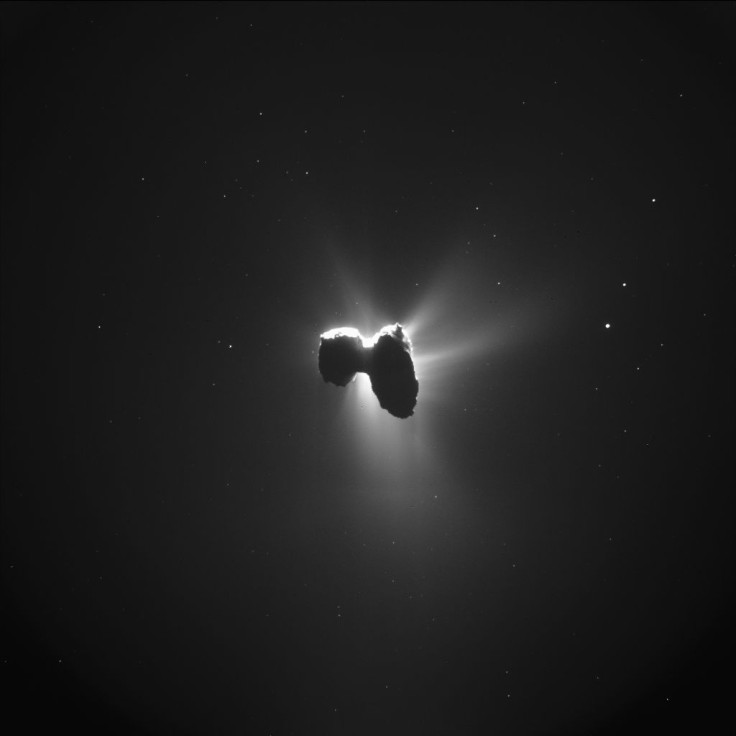Comet 67P: Rosetta Images Reveal Tumbling Rocks, Collapsing Cliffs And Widening Cracks

Humankind’s brief tryst with 67P/Churyumov-Gerasimenko ended in September when the European Space Agency (ESA) bid adieu to its Rosetta spacecraft, which had spent two years in orbit around the comet. However, the duck-shaped comet is still not done revealing its secrets.
Fresh analysis of images returned by Rosetta (detailed in studies published in the journals Science and Nature Astronomy) has revealed that as the comet approached the closest point in its orbit around the sun, its surface changed much more dramatically than scientists had expected it to.
“As comets approach the sun, they go into overdrive and exhibit spectacular changes on their surface,” Ramy El-Maarry, a member of the U.S. Rosetta science team from the University of Colorado, Boulder, and the lead author of the Science paper, said in a statement. “This is something we were not able to really appreciate before the Rosetta mission, which gave us the chance to look at a comet in ultra-high resolution for more than two years.”
Comets are basically big, dirty balls of ice, dust and rocks. Most comets orbit our sun in highly elliptical orbits, and, as a result, spend most of their time in the cold outer reaches of the solar system. When they come out of the shadow and move into the light — approaching the inner solar system — the sun begins to warm the ice on and near their surface. This causes the ice near the comets’ surface to sublimate, weakening their consolidated material. In addition, a comet’s increasing spin rate in the days leading up to perihelion also creates giant cracks on its surface.
All this was observed on comet 67P too, but in a more dramatic and rapid manner than scientists had previously believed possible.

“Monitoring the comet continuously as it traversed the inner Solar System gave us an unprecedented insight not only into how comets change when they travel close to the Sun, but also how fast these changes take place,” El-Maarry said in a statement. “We saw a massive cliff collapse and a large crack in the neck of the comet get bigger and bigger. And we discovered that boulders the size of a large truck could be moved across the comet’s surface a distance as long as one-and-a-half football fields.”
The observations also provided the first definitive link between an outburst of dust and gas and a crumbling cliff face — in this case, a nearly 440 feet cliff named Aswan.

“The last time we saw the fracture intact was on 4 July [2015], and in the absence of any other outburst events recorded in the following ten-day period, this is the most compelling evidence that we have that the observed outburst was directly linked to the collapse of the cliff,” Maurizio Pajola, lead author of the Nature Astronomy study, said in a statement.
© Copyright IBTimes 2024. All rights reserved.






















